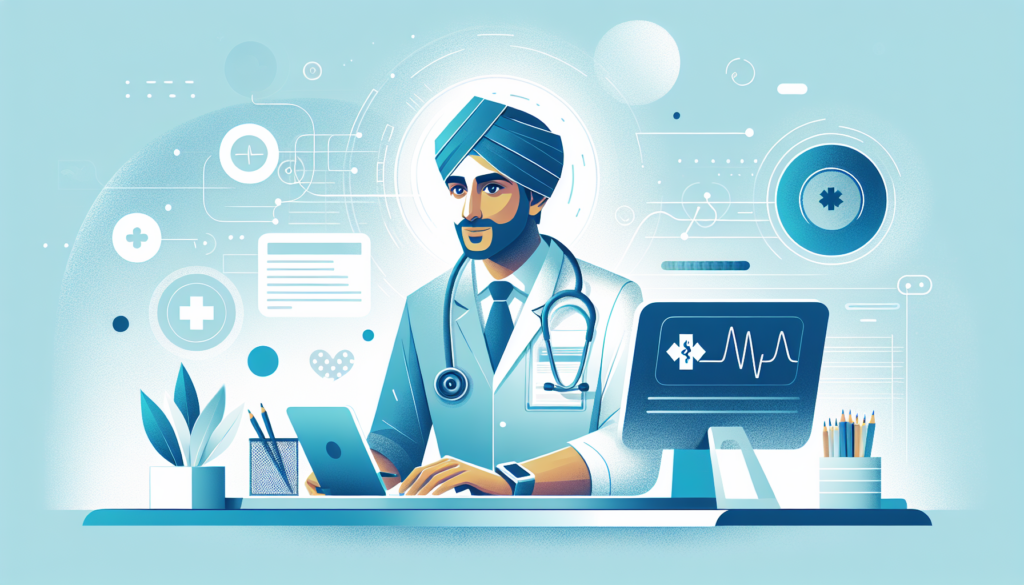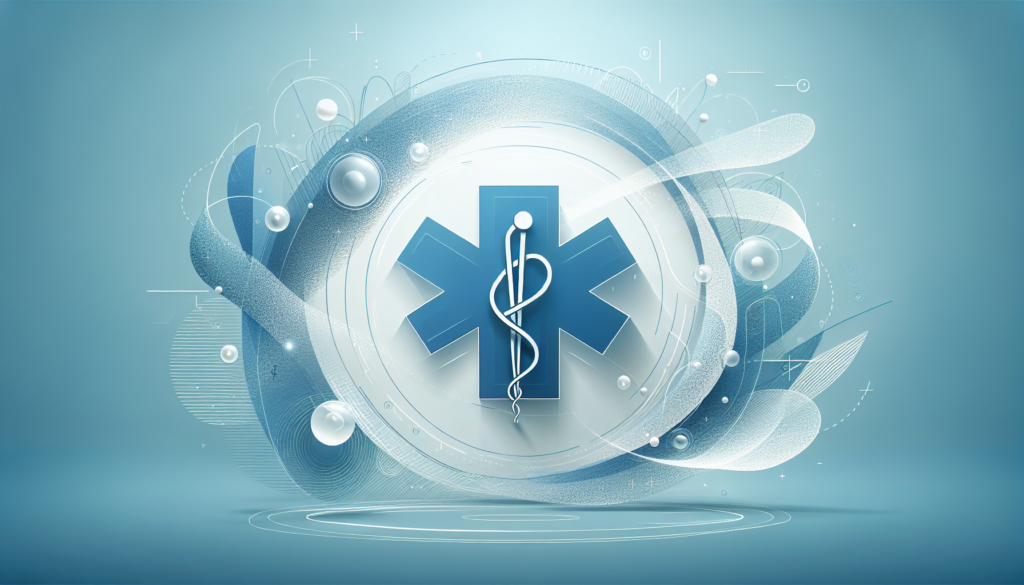Understanding the Essentials of Doctor Dictation
Doctor dictation is a fundamental component in the medical documentation process, serving as a critical bridge between patient care and medical record-keeping. When it comes to capturing the rich details of patient encounters, dictation offers medical professionals a swift and intuitive way to record information without the interruption of typing or handwriting notes. This not only speeds up the documentation process but also allows doctors to maintain a more personal connection with their patients during consultations, focusing on patient interaction instead of paperwork.
At the heart of effective doctor dictation is the understanding that accuracy and clarity are paramount. Medical professionals must enunciate clearly and use precise language to avoid any potential misinterpretation. The dictation process often involves a sequential recounting of the patient’s history, symptoms, diagnosis, and treatment plans, which makes the organization of thoughts before dictation an important preparatory step. This ensures that the resultant notes are coherent and exhaustive, minimizing the chances of important details being overlooked or lost in transcription.
- Preserving patient narrative without interruption
- Maintaining a personal connection with patients
- Enhancing productivity by reducing manual note-taking
- Organizing thoughts for a coherent medical record
To optimize the dictation process, many practitioners now leverage AI-powered digital scribe solutions, like those offered at ScribeMD. These advanced systems are equipped to understand the nuances of medical terminology and patient descriptions, providing a high accuracy rate that can rival and even surpass traditional transcription services. With these cutting-edge tools, the voice recognition software can efficiently convert spoken words into well-structured and formatted medical notes, reducing the time-consuming task of editing and reorganizing notes post-dictation.
The integration of such innovative technology in the dictation process is transforming medical documentation by cutting down on the tedious aspects of note-taking. This allows healthcare professionals to channel their efforts toward what truly matters: patient care. In turn, the resulting documentation is not only quick and accurate but also more consistent across different healthcare providers, ensuring a reliable and accessible patient medical history.
- Accurate transcription of complex medical terminology
- High-quality, structured medical notes
- Minimal need for post-dictation editing
- Consistency across medical records
Improving Medical Record Accuracy with Doctor Dictation Examples
The precision of medical records is paramount, bearing a significant impact on both patient care and the legal integrity of healthcare documentation. Doctor dictation, a prevalent method in the medical field, enables physicians to narrate patient encounters, diagnosis details, and treatment plans which are then transcribed into patient records. Aided by advanced technologies like AI-powered digital scribes, doctor dictations become highly accurate records. Implementation of specific examples while dictating not only improves the accuracy but also enhances the quality and comprehensibility of medical documentation.
For instance, when discussing symptoms, a doctor might say, “The patient presents with a fever,” but including additional details such as “The patient presents with a fever of 102 degrees, persistent over the last 24 hours,” offers a more complete picture of the patient’s condition. Similarly, during dictation, a physician could describe treatment regimens with greater precision by stating the exact dosage and frequency, like “Administer 500 mg of Amoxicillin thrice daily for 10 days,” thereby enhancing the accuracy of the medical regime in the records.
– Key elements to include while dictating for accuracy:
– Detailed descriptions of symptoms
– Precise medication dosages and schedules
– Clear depiction of diagnostic steps
– Specifics about patient history and demographics
Consistency in dictation approach is another foundational principle in maintaining accuracy. A standardized format ensures that vital patient information is captured systematically, which assists in eliminating disparities across various medical documents. Structuring dictations by beginning with the patient’s history, followed by examination findings, and culminating with the treatment plan provides a reliable and efficient template for medical documentation. Advanced AI transcription systems that recognize these structured dictations can interpret and document with remarkable accuracy—further reducing potential errors caused by misinterpretation or omission.
– Strategies for consistent and structured dictation:
– Utilize a standardized approach or template
– Employ chronological documentation
– Embrace technology solutions for dictation capture and transcription
Moreover, incorporating doctor dictation examples into training for medical practitioners can have a resounding effect on the quality of medical records. Scenario-based training modules that demonstrate the importance of detail and structure can steer new physicians towards best practices in record accuracy from the outset. Most importantly, such training can spotlight the critical role of dictation in reducing medical errors and ensuring a continuum of care that hinges on precise and reliable information. Simultaneously, having a dependable AI-driven transcription tool can significantly lessen the time doctors spend on documentation, reaffirming the value of an integrated approach to accuracy in medical records.
Streamlining Clinical Workflow: The Role of Doctor Dictation
In the dynamic realm of healthcare, efficiency and accuracy are paramount, particularly in the documentation process. Doctor dictation, a longstanding practice in medicine, has evolved with technology to become an indispensable tool in streamlining clinical workflow. By verbalizing patient encounters and clinical observations, healthcare professionals can capture complex medical information quickly and reliably. This process not only saves precious time but also minimizes the cognitive load on clinicians, allowing them to concentrate more on patient care.
When integrated with advanced AI-powered platforms like ScribeMD, doctor dictation transforms into an even more powerful asset. The AI algorithms are designed to understand medical terminology and context, ensuring that the transcribed notes are both accurate and relevant. Automated medical note-taking reduces the risk of human error, which is crucial in maintaining patient safety and compliance with healthcare regulations. It also significantly expedites the documentation process, so records are updated almost instantaneously, leading to better-informed clinical decisions.
- Time Efficiency: Dictation dramatically reduces the time taken to complete clinical documentation.
- Minimizes Cognitive Load: It enables clinicians to offload the memory task of note-taking.
- Accuracy: AI integration improves the precision of medical notes.
- Compliance: Ensures documentation meets legal and regulatory standards.
- Speed of Updates: Quick data entry leads to a more efficient care cycle.
Furthermore, the advent of sophisticated dictation software has played a critical role in the personalization and scalability of health records. Tailoring documentation to each patient’s unique clinical situation is essential for quality care, and AI-enhanced dictation services facilitate this by learning and adapting to individual doctor’s speech patterns and vocabulary. Consequently, this personalized approach taken by digital scribe solutions ensures each patient’s narrative is interpreted and recorded with the utmost accuracy.
- Personalized Care: Customizable to both the physician’s and patient’s needs.
- Adaptability: AI learns and adjusts to specific dictation styles and vocabularies.
- Scalable Records: Documentation can easily grow with the patient’s medical history.
Adopting Advanced AI for Enhanced Doctor Dictation
The medical profession is continually evolving, with technological advancements shaping the landscape of patient care. One significant stride forward is the adoption of advanced AI for doctor dictation, a cutting-edge concept that is revolutionizing the way medical professionals document patient encounters. Leveraging sophisticated artificial intelligence, these systems are designed to understand the nuances of medical jargon and various accents, ensuring that the dictated notes are captured with exceptional accuracy. The consequences of this are twofold; not only do these AI solutions offer an immediate transcription service, but they also reduce the margin of error that comes with manual documentation.
For busy healthcare practitioners, the integration of AI-driven dictation tools serves as a significant time-saving measure. Instead of spending hours on paperwork, doctors can now dictate their notes into the system, which then interprets and transcribes these notes in real-time. This means that patient information is updated swiftly and medical records are kept current without the delay that typically accompanies traditional dictation and manual transcription methods. The sophistication of these AI platforms lies in their ability to learn and adapt to the specific patterns of the healthcare provider’s speech, further refining the process of medical note-taking.
- Improved accuracy in documentation
- Real-time transcription for immediate record updating
- Adaptive learning to doctors’ specific speech patterns
Crucially, AI-enhanced dictation tools prioritize data security and compliance with healthcare regulations. Such platforms are engineered with privacy and confidentiality in mind, providing peace of mind for both patients and practitioners. The use of AI in doctor dictation not only enhances the accuracy and efficiency of medical note-taking; it also aligns with the digital security requirements that are pivotal in the healthcare industry. It stands as a robust solution that offers protection against data breaches while maintaining the integrity and confidentiality of sensitive patient information.
- Ensuring data security and compliance with healthcare regulations
- Maintaining privacy and confidentiality of patient information
Ultimately, the adoption of advanced AI for doctor dictation is a game-changer for medical professionals who seek to optimize their workflow and devote more attention to patient care. By reducing the administrative burden associated with documentation, medical practitioners can redirect their focus towards the more critical aspects of their role—diagnosis, treatment, and building patient relationships. As these AI solutions continue to develop, we can expect them to become an indispensable tool in the modern medical professional’s arsenal, delivering efficiency and precision that align with the highest standards of patient care.
- Optimizing workflow for healthcare practitioners
- Redistributing focus to critical aspects of patient care
- Continued development and indispensability in modern medicine
Best Practices in Doctor Dictation: Examples and Tips
Perfecting the art of dictation requires a blend of clarity, consistency, and consideration for the transcription process, whether human or AI-powered, like ScribeMD. When doctors dictate effectively, they ensure the accuracy and completeness of patient records, which are critical for patient care and legal documentation. Key among the best practices is the use of a clear, steady voice. Healthcare professionals should speak at a natural pace and pronounce medical terms with precision to avoid any misunderstandings. Ambient noise should be minimized whenever possible, to avoid interference with the voice recognition system.
Punctuation and formatting can also significantly impact the legibility of dictated notes. Cues such as ‘new paragraph’ or ‘comma’ should be spoken clearly to ensure the text is well-structured and easy to read. These dictation habits help in maintaining a coherent flow of information, which is essential when reviewing patient information for diagnoses or treatment plans. Structured dictation is not only beneficial for the scribes but also for others who may access the medical records, such as referring physicians or insurance providers.
- Speak in a clear, steady voice.
- Minimize ambient noise.
- Use explicit punctuation cues (e.g., ‘end of sentence’).
- Maintain a structured flow of information.
Moreover, dictation should also incorporate a standard structure or sequence, addressing patient history, examination findings, test results, diagnoses, and management plans accordingly. This consistency helps enhance the quality of documentation, making it easier to track patient progress or spot trends over time. A consistent format aids digital scribe systems like ScribeMD in recognizing and appropriately segmenting different sections of the medical record, ultimately streamlining data retrieval and analysis.
Contextual clarity is another pivotal practice. Doctors should avoid ambiguity by using specific medical nomenclature and detailing both the condition and the context. For instance, instead of saying ‘the patient is showing improvement’, a more effective dictation would be ‘the patient’s postoperative wound is showing signs of expected healing without signs of infection’. The latter provides a clear, action-oriented record that decisively informs clinical decisions.
- Follow a standard structure for dictation.
- Enhance documentation quality with consistent formatting.
- Provide contextual clarity in dictation.



